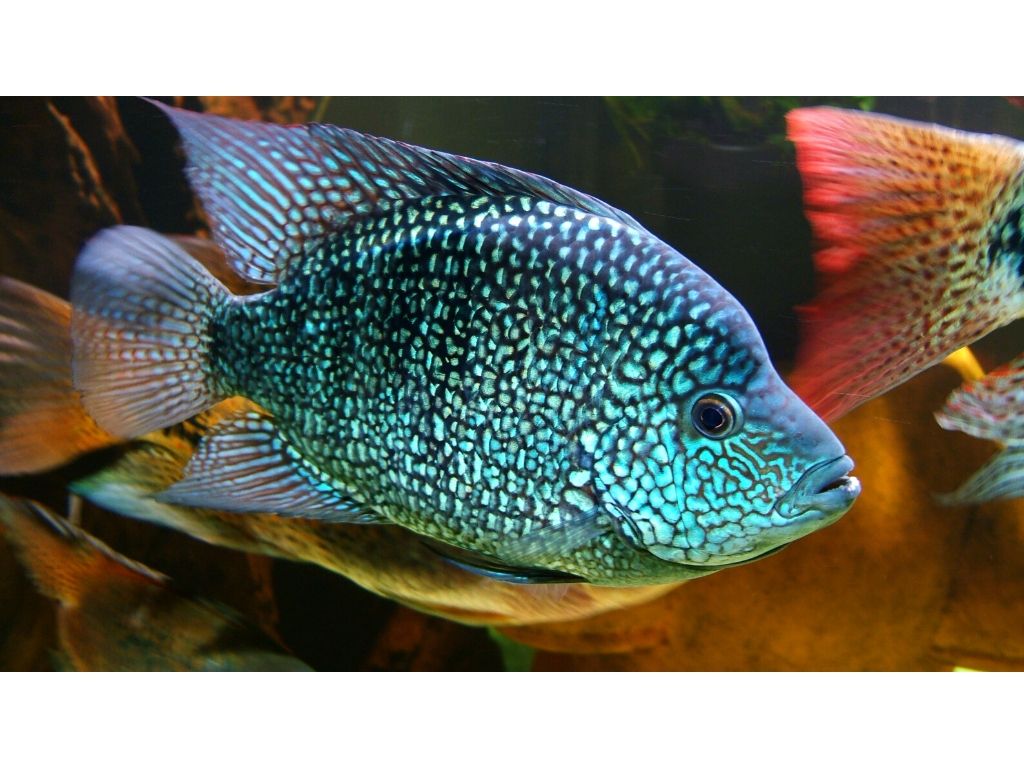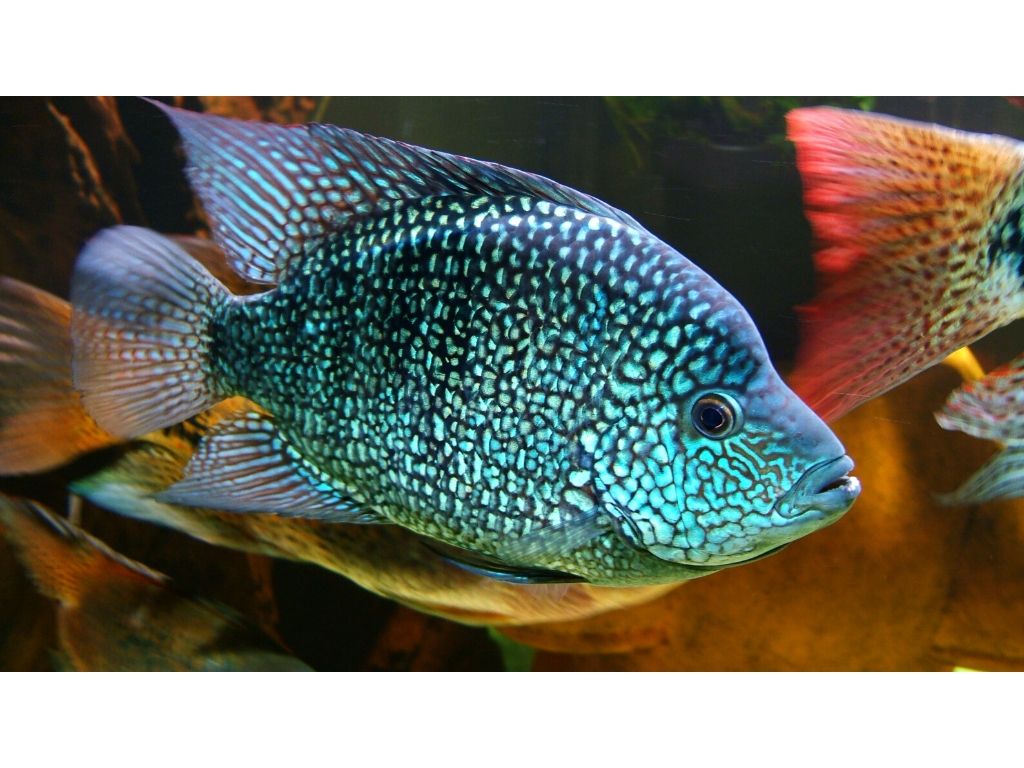SKU:1789M-2401
GREEN TEXAS CICHLID (Herichthys carpintis Escondito) 2"-3"
GREEN TEXAS CICHLID (Herichthys carpintis Escondito) 2"-3"
Low stock: 6 left
Couldn't load pickup availability
Short Variant
Herichthys carpintis is very similar to the Hericthys cyanoguttatus, the True Texas Cichlid. This cool fish exhibits great parental care and like all fish in the Herichthys genus change from their typical color to an amazing black and white breeding dress.
The Green Texas is usually able to be differentiated from the True Texas Cichlid by spot pattern. True Texas Cichlids generally have a fine spotted pattern where as the Green Texas has larger blotches on its side. These fish are hybridized in the hobby, so it is important to get a pure line of fish from a reputable dealer.
It's important to note that this species is fairly variable throughout its range and that different location variants of this species look quite different. It is therefore important to keep location variants pure and not mix fish from more than one location.
Distribution:
This fish is found in Eastern Mexico and is commonly found in the Panuco drainage.
Size, Maturity, and Sexual Dimorphism:
Size: Males- 12 inches, Females- 8 inches
Maturity: 3 inches
Sexual Dimorphism: Males are a little bit larger than females, and may develop a hump on their head.
Care:
This fish is aggressive, so give them a big tank. I kept two pairs in a 75. A smaller pair around 3 inches could probably be kept in a 20, although a larger tank is far more recommended. As they get larger, a six foot tank would probably serve best. This fish does fine in hard water. 50% water changes a week are recommended.
Diet:
Herichthys carpintis is not hard to feed. Feed them foods that will fatten them up quickly. I fed mine all sorts of flake, spectrum, and Tetra cichlid sticks.
Breeding:
Herichthys carpintis is easy to breed. Give this substrate spawning fish some flower pots and slate in the tank as a breeding surface. It will become obvious when a pair forms because of the aggression you will see in the tank.
The fish will lay anywhere from 150-1,000 (a very large pair) eggs. Once the eggs are laid, the pair will turn jet black with a white upper body (see photo below). This is really neat to see and is a characteristic of all the Herichthys species. The eggs then hatch in about five days and are free swimming in eight. These fish are great parents, so I left them with the fry. I siphoned some babies out around 1 week post free swimming. The fry are easy to raise.
Share


